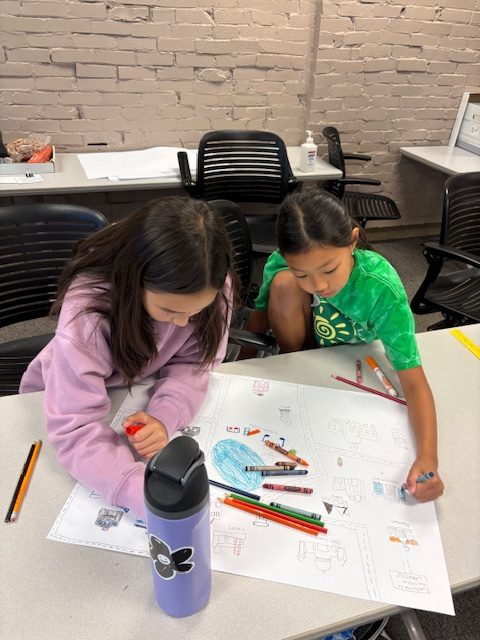Summer SAVY, Session 5 Day 3, “Exploring Epidemiology One Microorganism at a Time” (3rd-4th)
Dear parents,
Our epidemic is continuing to grow! This morning, in groups of 2-3, we created map posters of our (made-up) Tennessee towns that we must protect against the disease. The class worked really cooperatively and diligently on their creative maps. These included public parks, bodies of water, government and emergency offices, businesses, residential areas, streets, etc. Each group gave the town a name like Anne’s Spring, Oaksville, Vanderbilt, etc. While the students were making their posters, we had groups head over to view another set of microscope slides, which included: pig motor nerve, dog skeletal muscle, dog stomach, and a human blood smear.
The students learned about exponential growth and how microbes (like bacteria) can multiply rapidly. If a single pathogen doubles three times an hour, think how many microbes would be present after 24 hours! We made Venn diagrams comparing and contrasting bacteria and viruses. We discussed their shapes, sizes, ways of transmission, and structures. The class acknowledged that antibiotics help us fight strep throat (a bacterial infection), but for COVID-19 (a virus), we had to wait it out. Students brainstormed vaccines for both.
We also discussed epidemic (widespread infectious disease in a specific geographic area) vs. pandemic (infects globally across many countries and continents). We played a Kahoot demonstrating our knowledge of these concepts versus simple outbreaks.
We were fortunate to visit the clinical epidemiology lab of Allison Chan, a PhD student, located in the Vanderbilt Medical Center. The epidemiologists there had prepared slides showing bacteria growing. They showed us areas with clean hands and areas with fingers that had not been washed. We could see a difference! We compared this to our class bread experiment. When I asked the students about the lab, they mentioned that they liked “the incubator, extremely cold freezer, plates with bacteria, tools/machines in general, and that they could see where their dirty fingers touched the plate.” In the lab, the students made fine observations and asked fun questions.
Dinner table questions:
- What have you added to your microbe?
- What did you see in the lab?
- What is the name of your town, and what can you tell me about your map?
Warmly,
Ms. Elizabeth and Ms. Andrea





